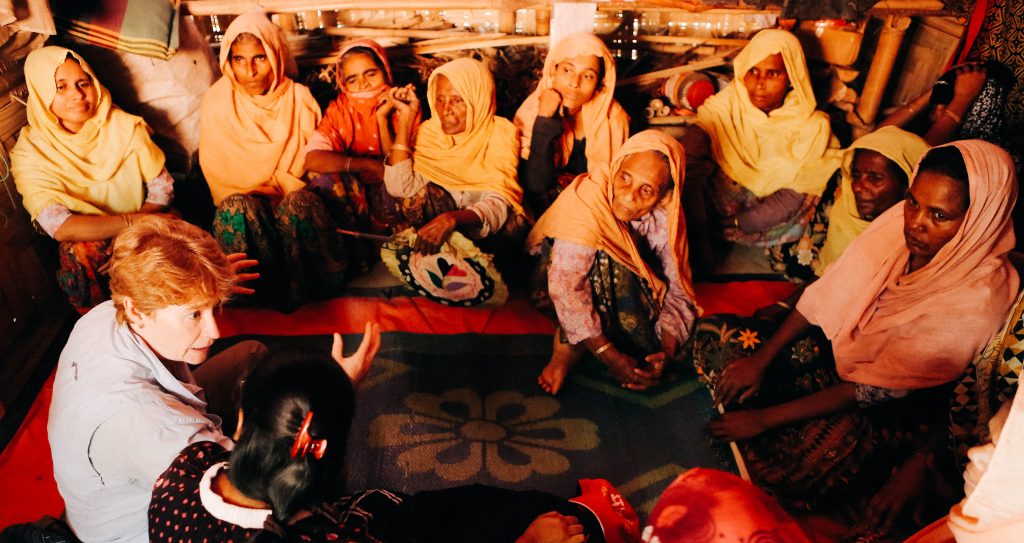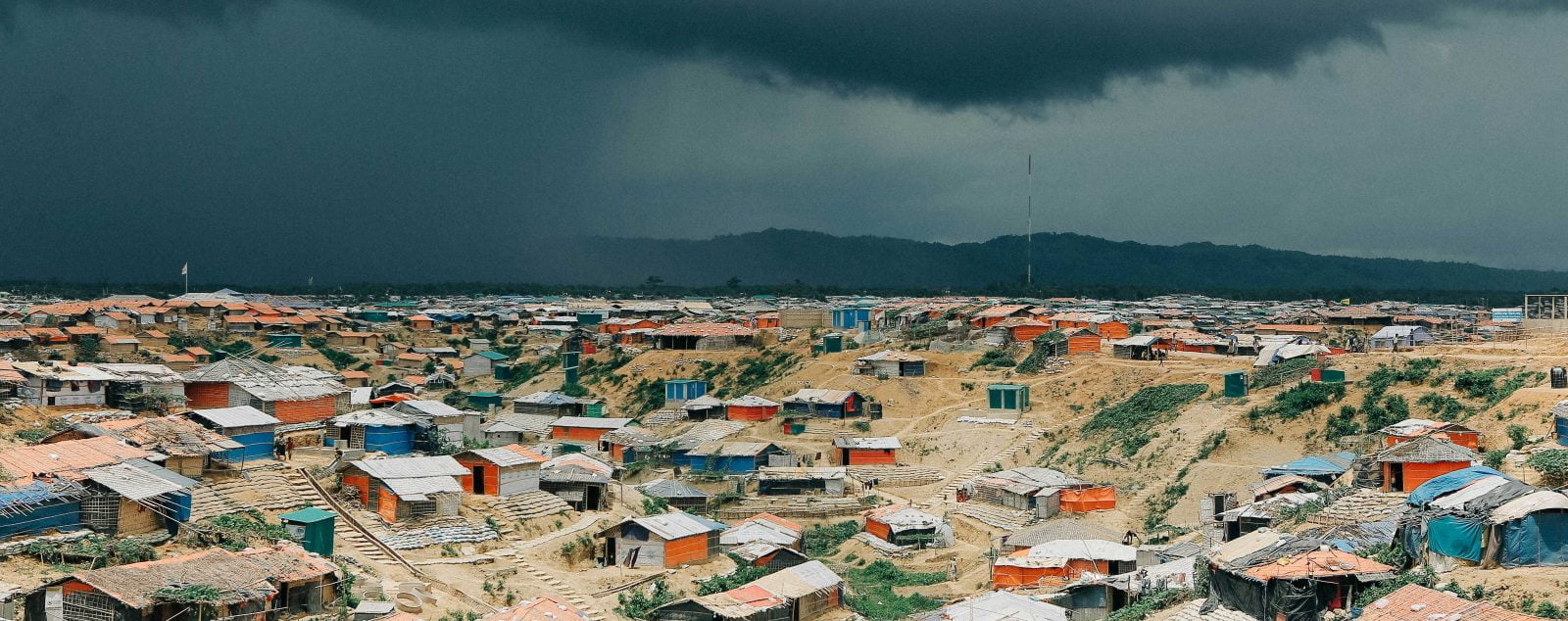Nestled deep within the Hakimpara camp, perched on the edge of a hill, is a cluster of homes belonging to more than a dozen Rohingya women. They arrived here last September, making the arduous, weeks-long journeys — by foot and then by boat — to the safety of Bangladesh.
They fled different villages, making separate journeys. Along the way, they each suffered a similar tragedy. They lost their husbands and, in many cases, their babies, too.
This is known as the “camp of the widows”.
Amid a population of more than 800,000 people who have fled crimes against humanity committed by the Myanmar military — arson, rape, murder, torture and other horrors — these women are the most vulnerable people in these camps.
They turn to each other for support and solidarity. They have no means of earning an income. They cannot leave the camps. The thought of returning back to Myanmar remains a forbidding one, reviving traumatic memories of the injustices that forced them across the border. And yet, their existence here remains a precarious one.
Nine months after fleeing one tragedy, they could be swept away by another. They have survived the past few months on the most meagre rations. Now the tiny, sweltering dwellings they call home could be lashed by fierce rains and violent winds that are gathering in the form of the looming monsoon season and the annual threat of cyclones.
Over recent weeks, more than 1,100 homes have been damaged by sharp winds, affecting nearly 10,000 people. Soon, that number could rise into the hundreds of thousands.

Widow couldn’t walk alone
Ambia Khatun, a 60-year-old widow I met, struggles to walk. Her left leg was disfigured when the military beat her last August. It curves in a way that means she has to hobble.
When she was seeking shelter, she couldn’t walk by herself. She spent her life savings pay people to help her, being carried on the shoulders of strangers as they traversed hills and crossed the Naf river that divides Bangladesh and Myanmar.
She doesn’t know what happened to her husband, her children or their children. She is taking care of an eight-year-old from a nearby village who clings to her for hope.
She is scarcely alone. At least 80 per cent of the camp’s population is made up of women and children. Most of the women are illiterate, victims of Myanmar’s entrenched and discriminatory system of apartheid that systematically denied the Rohingya access to services like education.
They fled gender-based violence in Myanmar and remain at risk of it in the camps here as well. They are trapped in their homes, unable to seek livelihoods as day labourers that many men have been able to.
When I asked what she needs, Ambia expressed only the most basic requests, things we all take for granted. She wants more tarpaulin to protect her home. She wants an umbrella to shield her from the rain. She wants a place to be able to cook her own food.
Because she struggles to walk by herself, she hasn’t been able to register for her own rations. For the past few months, she has been relying on the generosity of her camp neighbours who share portions of the Ramadan dawn and evening meals with her and the eight-year-old child in her care.
The rains have already started. The water drips through their roofs and turns their floors into mud. Snakes and insects are a constant hazard, the women say.
The winds cause their homes to shake, shearing off parts of their roofs or doors. But this is merely the beginning.
When the monsoon arrives, these frail settlements could collapse. The mud hills on which they are perched could give way as they turn into mud. And the howling winds could cause more damage that anyone seems prepared to acknowledge.
Focus must switch to long-term
Until now, the humanitarian effort has been mainly focused on trying to provide shelter to the hundreds of thousands of Rohingya whose huts are clustered closely together for as far as the eye can see. There has been little thought given to how these people will be able to sustain themselves over the long term.
While many express the hope of being able to return to their villages in Myanmar’s Rakhine State — when the conditions are right, when there is peace, and they are able to get their rights — it is unlikely that they will be able to return any time soon. And while they continue to languish in Bangladesh, there are woefully inadequate preparations for the extreme weather that is coming their way.
Over the coming weeks, according to UN coordinators on the ground, there are 200,000 people at risk. As the situation currently stands, they may lose their homes, once again.
They may be separated from their loved ones. Some may even lose their lives. This does not have to be inevitable.
So far, less than a fifth of the UN’s appeal for US$950 million this year has been committed. Australia and the international community should not wait until disaster strikes to help the Rohingya.
This article originally appeared here on the ABC website.
